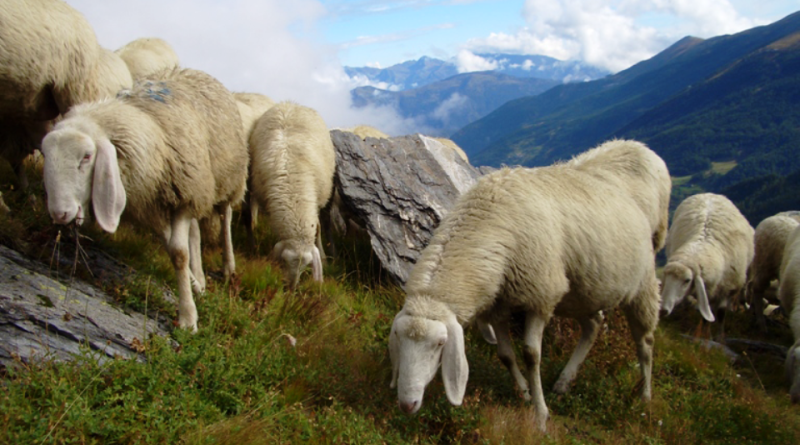Biellese
Biellese
The Biellese is a sheep (Ovis aries Linnaeus, 1758) of Italian origin, with a main aptitude for meat production.
Systematics –
From a systematic point of view it belongs to:
Eukaryota Domain,
Kingdom Animalia,
Phylum Chordata,
Mammalia class,
Order Artiodactyla,
Suborder Ruminantia,
Bovidae family,
Caprinae subfamily,
Genus Ovis,
Species O. aries,
Biellese breed.
Geographic and Area Distribution –
The Biellese is an Italian sheep breed, similar to the Bergamasca, native to Piedmont, originally from the Biellese area and bred in Piedmont, especially in the provinces of Vercelli, Turin and Cuneo and in the Aosta Valley, but it has also spread to the Po Valley , especially in Piedmont and also encroaching on Lombardy.
Origins and History –
The Biellese sheep breed, similarly to other breeds present in the Alps, originates from a Sudanese breed, the Ovis aries Sudanica.
This breed was selected for meat production, mainly light or heavy lamb. Originally from the Piedmontese valleys and the lower Aosta Valley, today it is bred mainly in the areas of Northern Italy.
Its breeding is in the wild with transhumance on alpine or pre-alpine pastures and in the marginal areas of the plain and is a breed with a prevalent aptitude for meat production, even if the production of milk and wool suitable for mattresses is not entirely negligible. , upholstered and rugs.
Finds zootechnical interest in the production of sheep meat for fine cuts. Currently trying to improve the breed from the point of view of hardiness and fertility.
For the purpose of improving the breed, an Arieti Center has been in operation since 1995 at the Alpine Station of Sauze d’Oulx in the province of Turin.
It has a consistency of about 40,000 heads (of which about 3000 are controlled).
Morphology –
The Biellese is a very large sheep, with an average height at the withers of 86 cm for males and 81 cm for females.
The average weight is around 100 kg for males and 82 kg for females.
It has a horned head, proportionate to the size, with a slightly sheepskin profile, long, wide and hanging ears.
The trunk is long, deep, with a wide sloping rump and a voluminous abdomen.
It has a white fleece, extended to the neck, trunk, proximal part of the forearm and leg; the biocchi are conical, with long coarse filaments and mixed with giarra (long, hard and rigid hairs, which together form wool).
The skin, the palate and the mucous membranes are pink in color, while the claws are yellow-amber.
Productive attitude –
The Biellese sheep breed is mainly raised for meat and wool. The milk it produces is used exclusively for the lamb which is marketed at 15-18 kg. Castrated lambs are marketed at 70 – 80 kg.
It is a breed that also has a discrete twinship of 40%
These sheep are raised with the transhumant system, with the use of the mountain pastures in the summer and winter stay in the sheepfold at the bottom of the valley or in the plains.
Production is seasonal and runs from November-December to April. The characteristic products of the breeding can be identified in three categories: Biellese Lamb weighing 12-15 kg, Biellese Agnellone 18-20 kg and Castrato Biellese weighing 75 kg or more.
The processing essentially consists in the slaughtering of the garment.
The average meat productions are as follows:
– around 65 kg for males and 50 kg for females.
The average productions of wool (in greasy) are:
– around 3.5 kg for rams and 3.0 kg for sheep.
The wool is of medium quality with conical biocchi, long and thick filaments and mixed with giarra; it is suitable for mattresses, padding and carpets but was once also used for sweaters, socks, hats (the thicker and rougher ones suitable for outdoor activities).
Guido Bissanti
Sources-
– Wikipedia, the free encyclopedia.
– Daniele Bigi, Alessio Zanon, 2010. Atlas of native breeds. Cattle, horses, sheep and goats, pigs reared in Italy, Edagricole-New Business Media, Bologna.
Photo source:
– https://www.biozootec.it/rubrica/biellese

